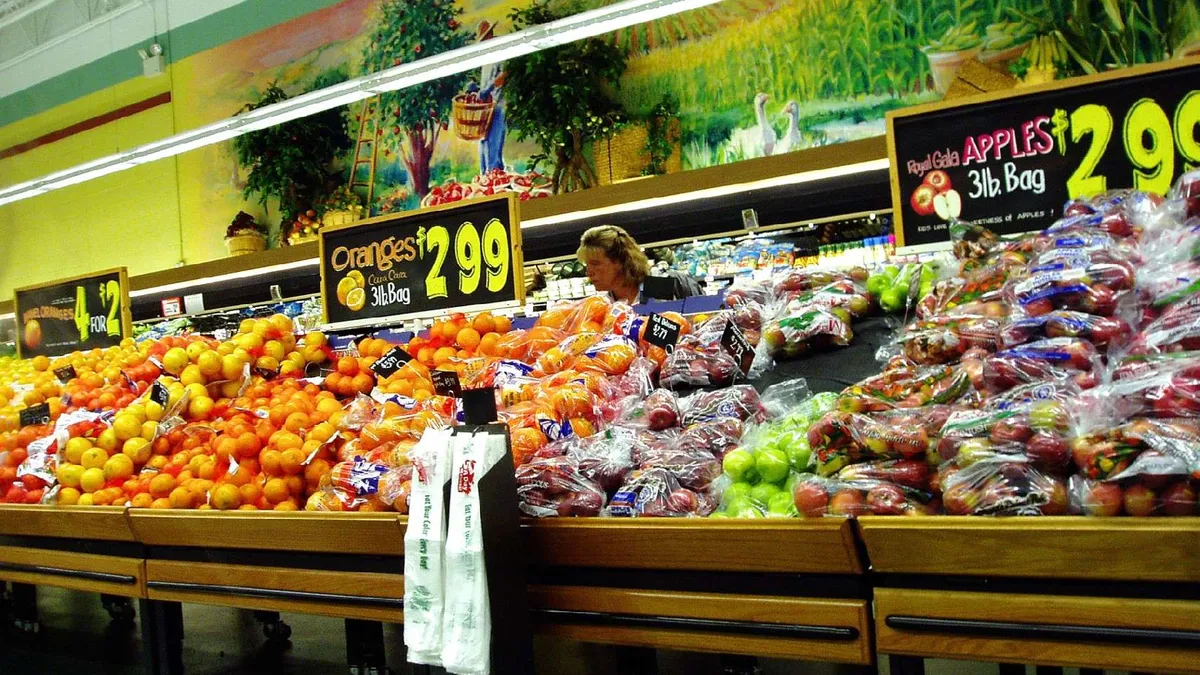Dive Brief:
- Shoppers in the United Kingdom, as in other places, have found a way to scam supermarket self-checkout stations, according to The Independent, often typing in codes for cheap carrots in place of expensive avocados, for example.
- “I was working with retailers to reduce shoplifting when one major supermarket discovered it had sold more carrots than it had ever had in stock,” Emmeline Taylor, a lecturer in criminology at the University of London, told The Independent. The practice has become so common that some shoppers don’t consider it a crime, she said, noting one man stole $600 in groceries in about 20 trips by typing in the code for loose onions.
- In the U.S., those trying to “sweetheart” – or steal by either entering the wrong PLU, skipping scanning, or scanning the wrong item – are likely to use codes for bananas or pinto beans rather than carrots. And while such thefts are nothing new for retailers, Produce Retailer suggests grocers keep an eye on sales of their most common, low-cost PLU codes, as a way to make sure customers aren't using those scans for other items.
Dive Insight:
Today’s consumers are in a hurry, and not many enjoy spending time in a checkout lane. Increasingly, retailers are turning to self-checkout lanes both to the speed up the time people spend paying for and bagging purchases, and to trim labor costs.
But retailers are right to be worried about theft. A lot of shoppers steal products by using the self-checkout lane, The Atlantic writes. A recent survey from Voucher Codes Pro, a digital coupon company, found nearly one in five of the 2,634 shoppers polled said they had stolen something while at the self-scanning station. The Independent estimates thefts at self-checkout tills has doubled within four years. And a study of 1 million transactions in the United Kingdom found losses incurred through self-service tech came to nearly 4% of stock, compared to just 1.47% otherwise. Research shows that part of the reason for higher theft rates is the people who ordinarily would not steal see this as “gaming the system” rather than outright theft.
Smartly, many retailers now have at least one staff member overseeing self-checkout stations, and some retailers have found success by placing signs warning against theft near self-checkout stations or giving the systems names to humanize them and create customer empathy.
Furthermore, stores are looking beyond self-checkouts for ways to streamline the buying process. Macey’s, which runs 12 supermarkets in Utah, now offers a new checkout system that lets customers scan products and pay using a special smartphone app. And Kroger announced earlier this year an expansion of its Scan, Bag, Go service from 25 stores to 400 locations in 2018, according to Biz Journals. The program allows consumers to scan items as they shop with a store-provided scanner or the Scan, Bag, Go smartphone app and then pay at a self-checkout station. The store has systems in place, such as randomly checking bags, to curtail theft. And although Kroger recognizes some thefts will happen, overall the store considers its customers an honest bunch, John Wisor, a Kroger Columbus division Scan, Bag, Go specialist, told The Blade in April.
Some retailers, however, are finding consumers aren’t as interested in techy checkout solutions as industry leaders might have thought.
Walmart, for example, recently killed its Scan & Go app which allowed consumers pay for items with their mobile phones in order to skip the checkout lane, because, the company told Business Insider, not may customers were using the technology. Customers found bagging, weighing and scanning fresh produce a hassle, and the number and variety of items on Walmart shelves confusing. The company has better luck with a similar system at Sam’s Club stores, where items are prepackaged and sold in bulk.
In order to attract consumers with the idea of convenience, retailers must find ways to actually make self-checkout systems convenient. At the same time, they must find ways to keep consumers from walking out of stores with items they haven’t actually paid for. It's a tall order, and it may take a while for retailers to find the best methods.








